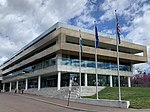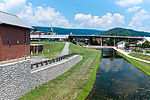List of ambassadors of Liechtenstein to the United States
Ambassadors of Liechtenstein to the United StatesLists of ambassadors of LiechtensteinLists of ambassadors to the United States

The Liechtensteiner ambassador in Washington, D. C. is the official representative of the Government in Vaduz to the Government of the United States.
Excerpt from the Wikipedia article List of ambassadors of Liechtenstein to the United States (License: CC BY-SA 3.0, Authors, Images).List of ambassadors of Liechtenstein to the United States
K Street Northwest, Washington Georgetown
Geographical coordinates (GPS) Address Nearby Places Show on map
Geographical coordinates (GPS)
| Latitude | Longitude |
|---|---|
| N 38.901984 ° | E -77.058674 ° |
Address
K Street Northwest 2900
20566 Washington, Georgetown
District of Columbia, United States
Open on Google Maps








